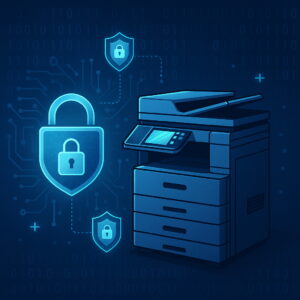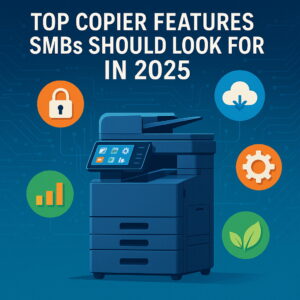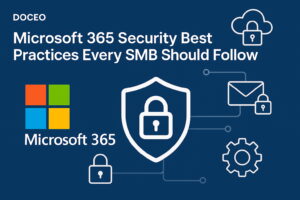Biometric and Blockchain Print Security: What’s Real, What’s Emerging, and What You Need to Know
Printers are no longer simple hardware appliances. In today’s interconnected environments, they are data-handling endpoints—often processing highly sensitive information, from health records to legal briefs to confidential financials. Despite this, many organizations still rely on outdated workflows that leave sensitive documents exposed on output trays or allow untracked access to confidential print jobs. The goal of this article isn’t to promote a product. It’s to provide clarity. We’ll look at: Secure print release is a feature that holds a print job until the user authenticates at the device. It prevents documents from being printed unattended, minimizing the risk of data exposure in shared or busy print environments. This functionality is common in many modern print management systems. But the effectiveness of secure print workflows depends entirely on the authentication method used. If users are verifying their identity with a PIN or swipe card, those credentials can be lost, guessed, or shared. That’s where biometrics come in. Biometric authentication uses physical or behavioral traits—like fingerprints or facial recognition—to confirm identity. It’s widely used in smartphones, airport security, and increasingly, enterprise environments. Biometric print release is already being used in sectors like healthcare, law, finance, and education—anywhere confidential information needs to stay that way. Blockchain has been gaining attention as a tool for security and compliance. In theory, it could provide tamper-proof, immutable audit trails for print environments—an attractive idea for regulated industries. The potential is real, but most organizations aren’t ready to implement blockchain for print just yet. That said, it’s a space worth tracking, particularly for those who need airtight auditability or chain-of-custody documentation. At Doceo, we stay closely attuned to technologies that could shape the future of secure printing. Blockchain isn’t part of our current offerings, but it’s a space we’re watching closely. The idea of tamper-proof audit trails and verifiable print histories holds clear promise, especially for organizations that operate under strict compliance or security requirements. Our goal in covering it here is simple: to help our clients understand what’s on the horizon, what’s real today, and what’s worth watching. No hype—just insight. Regulations across industries increasingly expect organizations to demonstrate control, not just over digital files, but physical documents too. Organizations must actively control how they print, release, and access documents. Biometric print release directly supports these requirements by ensuring: Blockchain may enhance this in the future, but biometric authentication already provides immediate, reliable control. Imagine a mid-sized law firm printing hundreds of confidential legal documents each week. If blockchain-based auditing becomes practical in the future, this firm would already have the identity control foundation in place to support it. Organizations are investing in cybersecurity, cloud infrastructure, and zero-trust models, and they must also secure their print environments. Biometric authentication is a proven way to secure document access. Blockchain may strengthen audit trust in the future. And keeping your team informed about both is part of leading responsibly. Doceo helps organizations strengthen their print infrastructure with solutions that are: ✔︎ Proven ✔︎ Practical ✔︎ Compliant ✔︎ Scalable We offer: We don’t offer blockchain-based print solutions today, but we’re tracking the trend closely and will evaluate it when it becomes both proven and practical for our clients. 📞 Talk to a Doceo print security expert at 888-757-6626 Doceo — Proven People. Proven Results.

Why Print Security Needs a More Honest Conversation
What Is Secure Print Release—and Why Does It Matter?
Biometrics: A Proven Way to Tie Print Access to Identity
In print workflows, biometrics:
Supported biometric methods:
Blockchain: What It Could Offer—and Where It Stands Today
Potential benefits:
Current reality:
Why Blockchain Is On Our Radar
Compliance Demands More Than “Good Enough”
Regulations impacted by print workflows:
A Practical Use Case: Regional Law Firm
Their vulnerabilities:
With biometric secure print release:
Final Thought: Secure Printing Shouldn’t Be an Afterthought
How Doceo Can Help




